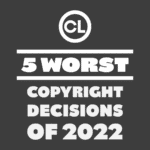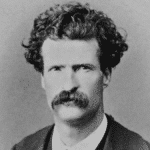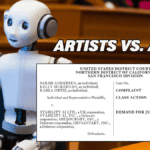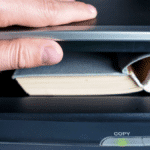Instagram fights a class action in California, while a New York court rejects a settled embedding defense. Is it time to think about life after the server test?
With the dog days of summer squarely upon us, you’d be forgiven for missing the bicoastal battle that’s been brewing over the legality of Instagram embedding. But don’t worry; the only thing at stake is the internet as we know it.
At least that’s what proponents of the so-called “server test” have argued in the face of a number of new legal challenges to the ubiquitous practice of embedding. They include a class action lawsuit against Instagram itself, currently pending in the Northern District of California, as well as a Southern District of New York case in which the court rejected the server test outright in an opinion issued last Friday.
Hunley v. Instagram
Two weeks ago, Instagram filed a motion to dismiss a putative class action lawsuit filed by photographer Alexis Hunley, arguing that it can’t be held secondarily liable when third parties embed Instagram posts on their websites. That’s because, according to Instagram, embedding doesn’t constitute an act of direct copyright infringement in the first place.
Instagram’s argument relies upon the server test, a rule that has its origins in the 2007 Ninth Circuit case Perfect 10 v. Amazon.com, which involved Google image thumbnails. In a nutshell, the server test holds that a website operator can only directly infringe a copyright owner’s rights if it hosts and transmits the copyrighted material from its own server.
The test is premised upon the technical difference between a website that displays a copy of an image hosted on the site’s own server and a site that uses HTML instructions to direct a user’s browser to another server that stores the image. Providing these HTML instructions, per the server test, isn’t equivalent to displaying a “copy” of the image. Therefore, there’s no direct infringement.
Nicklen v. Sinclair Broadcast Group
Meanwhile, as Instagram draws the battle lines in San Francisco, a federal court three thousand miles away in New York has rejected the server test outright. In a July 30 order in Nicklen v. Sinclair Broadcast Group, Inc., Judge Jed Rakoff denied a motion to dismiss filed by Sinclair Broadcasting in a dispute over a video of a starving polar bear. Relying on the server test, Sinclair had argued that it and its affiliates didn’t infringe the copyright in Paul Nicklen’s video because they only embedded it on their websites from Instagram or Facebook.
Judge Rakoff held that the server test is “contrary to the text and legislative history of the Copyright Act,” which “defines ‘to display’ as ‘to show a copy of’ a work, not ‘to make and then show a copy of the copyrighted work.'” In other words, the fact that Sinclair didn’t actually possess a copy of Nicklen’s video doesn’t mean that Sinclair wasn’t responsible for displaying it.
With his decision, Rakoff became the second SDNY judge to reject the server test, joining a view shared by then-judge Katherine Forrest in 2018’s Goldman v. Breitbart News Network.
The court’s decision in Nicklen doesn’t focus on what’s actually going on behind the scenes when a website uses embed code to instruct a visitor’s web browser to fetch the contents of a post directly from Instagram’s own servers. Instead, Nicklen looks at how the image appears to end users, who presumably don’t know or care on whose server an image is actually stored.
Nor was Judge Rakoff particularly moved by the doom-and-gloom arguments of what would happen in the absence of the server test:
“Proponents of the server rule suggest that a contrary rule would impose far-reaching and ruinous liability, supposedly grinding the internet to a halt. These speculations seem farfetched but are, in any case, just speculations. Moreover, the alternative provided by the server rule is no more palatable. Under the server rule, a photographer who promotes his work on Instagram or a filmmaker who posts her short film on YouTube surrenders control over how, when, and by whom their work is subsequently shown—reducing the display right, effectively, to the limited right of first publication that the Copyright Act of 1976 rejects.”
Nicklen v. Sinclair Broadcast Group, Inc.., July 30, 2021 Order Denying Sinclair’s Motion to Dismiss
Sinclair doesn’t have an immediate right to appeal Judge Rakoff’s decision to the Second Circuit for review. The best it can do is ask the court to certify the decision for interlocutory appeal which, if granted, would allow Sinclair to request review by the higher court. The Second Circuit denied a similar request in 2018’s Breitbart case, disappointing observers who were hoping for a good old-fashioned circuit split that could eventually be resolved by the Supreme Court.
For now, we’ll be watching to see how Northern District of California Judge Charles Breyer will rule on Instagram’s motion to dismiss in the putative class action lawsuit filed by lead plaintiff Hunley. That motion is currently set for hearing on October 14, 2021.
A Post-Server Test Internet?
Meanwhile, I suppose we should start thinking about a world in which the server test no longer exists. Would the internet really look fundamentally different, as proponents of the server test so often claim? Perhaps, but it’s just as likely that other legal defenses or technological adaptations will fill the void.
The most obvious potential legal defenses, other than fair use, include reliance on an express or implied license. For example, Instagram could exercise its right to sublicense publicly displayed images for purposes of embedding, so long as individual users agreed to the site’s terms and conditions. As I’ve discussed before, Instagram upset the settled expectations of many of its users last year when it announced that it had not in fact granted users of its web embed API a license to display embedded content on other websites. If Instagram’s server test defense in Hunley is rejected, I expect the site’s position may change.
Possible technological implementations could include requiring a website visitor to make an active choice to click on a link before an image is displayed. Even better, Instagram and similar sites could institute an “opt in” (or “opt out”) procedure whereby individual users would have the ability to decide whether their publicly accessible photos would be retrieved via an embed request.
Regardless of what happens, content creators and content users will adjust and I’m fairly certain the internet will not, in fact, come to a grinding halt. Of course, I may be wrong, so you best be getting your comments in now, either in the space below or on our socials @copyrightlately. In the meantime, a copy of Nicklen v. Sinclair Broadcast Group, the new SDNY decision rejecting the server test, is below—courtesy of embed code I might add.
View Fullscreen





2 comments
As an amateur photographer who posts my own work on Instagram, I find it very difficult to sympathize with the photographers suing Instagram over embedding. I understand the practical reality that Instagram is an excellent marketing tool and that it’s hard these days not to market on Instagram. But with Instagram’s benefits comes trade-offs. That said, I’m also a lawyer who understands the server test and the difference between embedding (which, in my view, tends to give the artist distinct recognition and actually directs users to the artist’s account to see more work) and outright copying and pasting a copyrighted image to an online news article, blog, etc. I can see where that distinction may not be very intuitive to nonlawyer artists.
I agree with you from my perspective as an amateur photographer who also posts on Instagram – but I recognize that I might not feel the same way if photography were my profession.